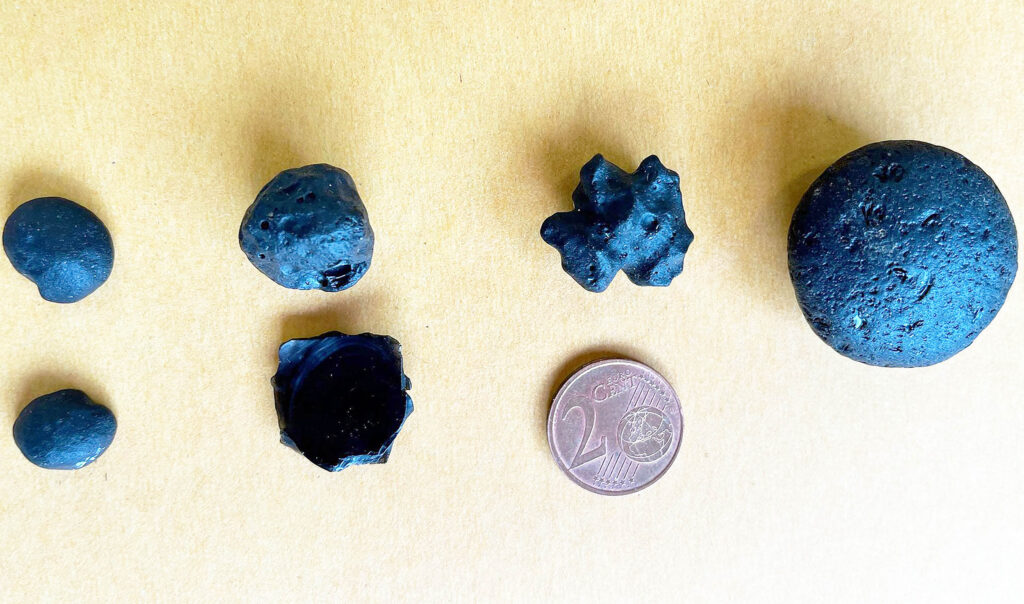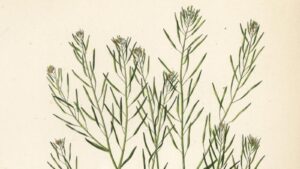
Tiny fragments of natural glass discovered in South Australia are shedding light on an ancient asteroid impact that occurred approximately 11 million years ago. These seemingly insignificant pieces of glass are not only tough and unassuming but also carry the signature of a violent event that reshaped the Earth over a vast region.
Researchers have identified these glasses as distinct from any known deposits, suggesting they were formed from melted surface rocks that cooled while airborne before settling over a 560-mile-wide area. This discovery marks a significant addition to our understanding of Earth’s geological history and the impact events that have shaped it.
Unveiling the Unique Tektites
The focus of this research is a rare set of tektites, a type of impact-formed glass that scatters far from its original impact site. These glasses are characterized by their unusual chemistry, low water content, and the presence of nearly pure silica grains within them.
“These tektites are unique because of their unusual chemistry and their age, which is about 11 million years,” explained Anna Musolino, a PhD student at Aix-Marseille University. Musolino collaborated with researchers from Curtin University and several French laboratories to determine the precise age of these glasses, estimated at 10.76 million years. Their findings suggest that this glass represents a separate impact event from the well-known Australasian deposit.
Understanding Tektites and Their Formation
Tektites are formed when the intense heat from an impact melts surface sediments and bedrock, propelling droplets of molten rock into the atmosphere. As these droplets cool, they transform into glass and can land far from the original impact site, creating a large strewn field.
The Australian glasses follow this pattern but stand out due to their unique chemistry, which trends toward andesitic to dacitic rock. This suggests a volcanic arc target rather than the typical continental crust, providing new insights into the types of impacts that have occurred in Earth’s history.
Dating the Impact Glass
The research team utilized 40Ar/39Ar geochronology to date the glasses. This method involves heating a sample in steps and measuring argon isotopes to establish a plateau age. The technique is particularly effective for volcanic rocks and impact glasses, as it can detect partial resetting and contamination.
“Understanding when and how often large asteroids have struck Earth also helps us assess the risk of future impacts, which is important for planetary defense,” said Fred Jourdan, professor at Curtin University’s School of Earth and Planetary Sciences.
Searching for the Missing Crater
Despite the discovery of these unique tektites, the crater from which they originated remains elusive. The size of the strewn field, combined with the chemistry and isotopic evidence, points toward a volcanic arc target struck by a stony asteroid.
Increases in nickel, cobalt, and chromium levels in the glasses suggest contamination from a chondritic impactor. The isotopic values for strontium and neodymium align with materials from several arcs around northern Australia, highlighting regions such as Luzon, Sulawesi, and the Bismarck area as potential sources.
Implications for Earth’s Impact History
Scientists have identified only a few large tektite fields on land. A recent study linked peculiar glasses in Belize to the Pantasma crater in Nicaragua, adding Central America to this exclusive list. The comparison with the Australasian deposit, which is much younger at approximately 788,000 years, underscores the significance of this new discovery.
The Australian glasses, with their low water content and minimal bubbles, indicate rapid melting and violent ejection. Their trace elements suggest an andesitic target rock, supporting the hypothesis of a volcanic arc impact.
Cosmic Glass and Future Research
Tektites serve as valuable records of impact conditions, preserving information about temperature, chemistry, and the mixing ratio between the projectile and target. The discovery of a new space glass field in Australia adds a critical episode to Earth’s late Miocene impact record.
“These glasses are unique to Australia and have recorded an ancient impact event we did not even know about,” said Jourdan.
This revelation prompts further exploration on the ground, as researchers continue to search for additional fragments and, potentially, the hidden crater that initiated this cosmic event. The study, published in Earth and Planetary Science Letters, marks a significant advancement in our understanding of Earth’s geological history and the forces that have shaped it.
For more engaging articles, exclusive content, and the latest updates, subscribe to our newsletter. Explore EarthSnap, a free app brought to you by Eric Ralls and Earth.com.





